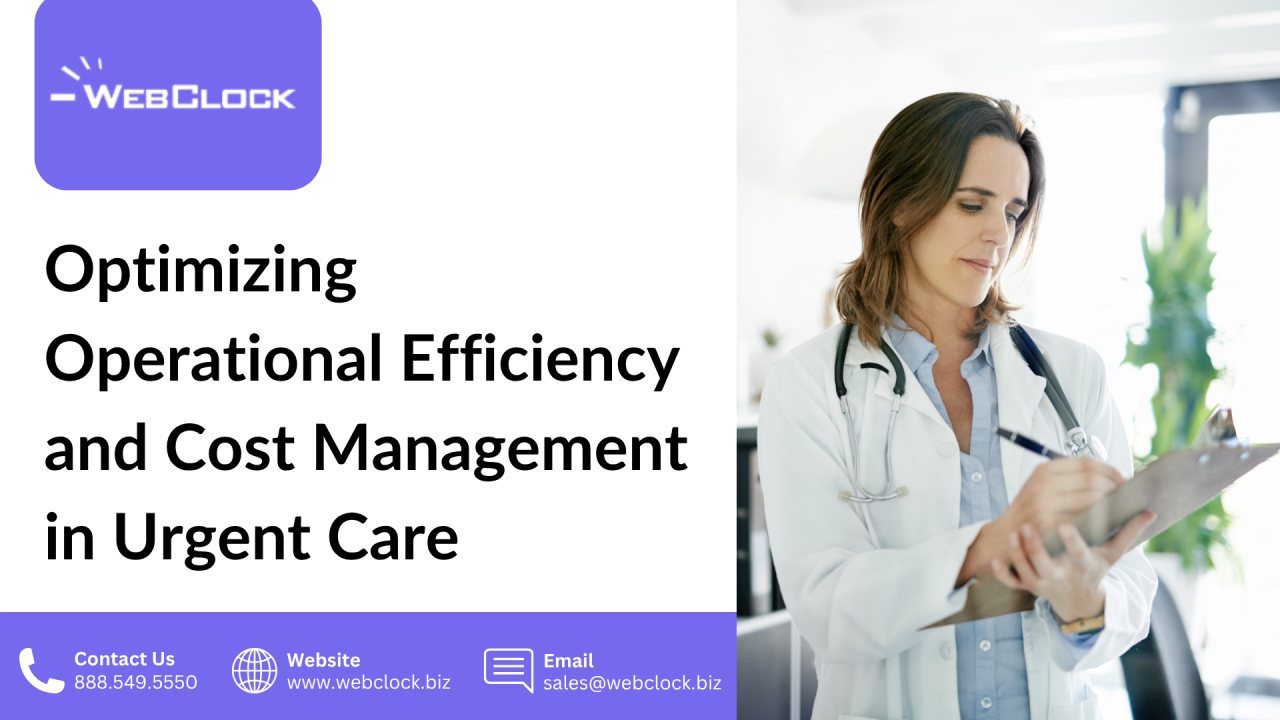Optimizing Operational Efficiency and Cost Management in Urgent Care

As patient demand surges, urgent care centers face a critical challenge: optimizing operational efficiency while managing labor costs effectively. Implementing cost-effective strategies is essential for enhancing service delivery and ensuring financial sustainability. By addressing these challenges head-on, urgent care facilities can thrive and continue to provide high-quality care to their patients.
The Importance of Operational Efficiency
Operational efficiency is a critical factor in the success of urgent care centers. It directly impacts the quality of patient care, staff satisfaction, and the overall financial health of the organization. When operations run smoothly, healthcare providers can focus on delivering high-quality care without the distractions of administrative burdens or inefficient processes.
However, achieving operational efficiency is not without its challenges. Many urgent care centers struggle with outdated systems, manual processes, and a lack of integration between various functions. These inefficiencies can lead to increased labor costs, longer wait times for patients, and ultimately, a decline in patient satisfaction.
Strategies for Cost-Effective Operations
To navigate these challenges, urgent care centers must adopt strategies that promote affordable solutions and streamline operations. Here are several key approaches to consider:
1. Implementing Workforce Management Tools
Investing in modern workforce management tools is essential for optimizing operational efficiency. Solutions like WebClock provide features that enable instant data synchronization with payroll systems, automate calculations of hours and overtime, and generate detailed reports. By automating these processes, urgent care centers can reduce administrative burdens, minimize errors, and ensure that staff are compensated accurately and on time.
Moreover, effective workforce management tools allow for better scheduling practices. By utilizing data-driven insights, managers can create schedules that align with patient demand, ensuring that the right number of staff members are available during peak times without overstaffing during quieter periods. This not only helps in managing labor costs but also enhances employee satisfaction by providing them with predictable schedules.
2. Streamlining Administrative Processes
Administrative inefficiencies can significantly impact operational costs. Urgent care centers should evaluate their current processes and identify areas for improvement. This may involve digitizing patient intake forms, automating appointment scheduling, and utilizing electronic health records (EHR) systems to streamline documentation.
By reducing the time spent on administrative tasks, healthcare providers can focus more on patient care, leading to improved outcomes and higher patient satisfaction. Additionally, streamlined processes can help reduce the need for additional staff, further managing labor costs effectively.
3. Fostering a Culture of Continuous Improvement
Creating a culture of continuous improvement within the organization is vital for maintaining operational efficiency. Encourage staff to provide feedback on processes and suggest improvements. Regular training sessions can also help staff stay updated on best practices and new technologies that can enhance efficiency.
By involving employees in the decision-making process, urgent care centers can foster a sense of ownership and accountability, leading to higher engagement and productivity. This collaborative approach can uncover innovative solutions that drive operational efficiency and reduce costs.
The Role of Scalable Solutions
As urgent care centers grow, it is essential to adopt scalable solutions that can adapt to changing needs. This includes investing in technology that can grow with the organization, such as cloud-based workforce management systems. These solutions not only provide flexibility but also ensure that urgent care centers can respond quickly to fluctuations in patient volume and staffing requirements.
Scalable solutions also allow for better data analysis, enabling urgent care centers to make informed decisions based on real-time insights. By leveraging data, organizations can identify trends, forecast demand, and adjust staffing levels accordingly, ensuring that they remain cost-effective while delivering high-quality care.
Empowering Urgent Care: The Path to Sustainable Success
In conclusion, optimizing operational efficiency and managing labor costs effectively are critical challenges for urgent care centers. By implementing cost-effective strategies, such as investing in workforce management tools, streamlining administrative processes, and fostering a culture of continuous improvement, organizations can enhance their operational performance while ensuring financial sustainability.
As the urgent care sector continues to evolve, it is imperative for stakeholders to prioritize these strategies. By embracing scalable solutions and leveraging technology, urgent care centers can create a more efficient and cost-effective environment that ultimately benefits both staff and patients.
Get Started Today
Discover how ITCS-WebClock can streamline your time and attendance management. Save time, reduce costs, and stay compliant with our powerful yet easy-to-use solutions.

